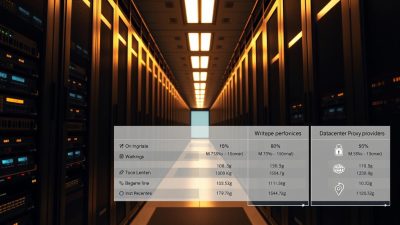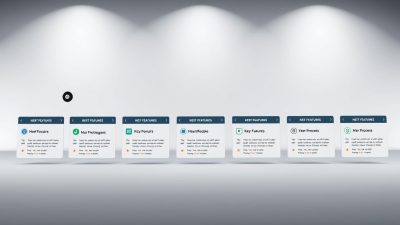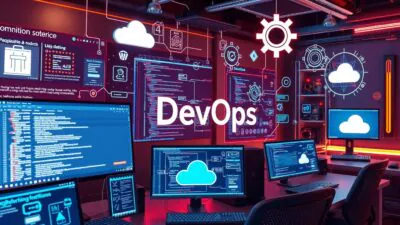FTC disclaimer: This post contains affiliate links and I will be compensated if you make a purchase after clicking on my link.
Are you looking for a powerful CMS to manage your website? Java CMS software is your answer. It’s flexible and scalable, perfect for creating dynamic, secure, and user-friendly sites.
Java CMS software changes how you manage your digital content. It has features like blogs, forums, and photo galleries. These make creating engaging online experiences easy.
These systems grow with your website, meeting your business needs. They work on many platforms, from Linux to Windows. Plus, many are open-source, saving you money on licensing fees.
Find the best Java CMS software for your online presence. Learn about their features, pricing, and use cases. Choose the perfect one for your business.
Key Takeaways
- Java CMS software offers exceptional scalability and growth potential for your website.
- These platforms provide high portability, allowing you to manage content across multiple operating systems.
- Many Java CMS solutions are open-source, making them a cost-effective choice for web development.
- Java CMS software delivers a secure environment and advanced security features to protect your website.
- These systems offer a user-friendly interface, customization capabilities, and a wide range of plugins for an enhanced user experience.
Introduction to Java CMS Software
In today’s digital world, content management systems (CMS) are key for businesses and people. They let users make, manage, and share web content easily. Java-based CMS systems are popular for their strong and growing web development needs.
What is CMS Software?
A content management system (CMS) is software that helps manage digital content. It makes it easy to update and keep a website fresh. This is important for keeping an online presence up-to-date.
Benefits of Using Java for CMS
- Scalability and Performance: Java CMS software is great for big websites and apps. It’s perfect for companies that need to grow their online content.
- Portability and Platform Independence: Java CMS works on many operating systems. This makes it flexible and easy to use in different settings.
- Security and Reliability: Java is secure and stable. It protects data and keeps apps running smoothly.
- Cost-Effectiveness and Customization: Many Java CMS options are free and open-source. This means no extra costs and the chance to customize the software as needed.
- Community Support and Integration: The Java world has a big and active community. This community offers lots of help, plugins, and integrations to make Java CMS better.
Java CMS software is great for making engaging and dynamic websites. It’s a top choice for businesses needing a secure, scalable, and customizable CMS solution.
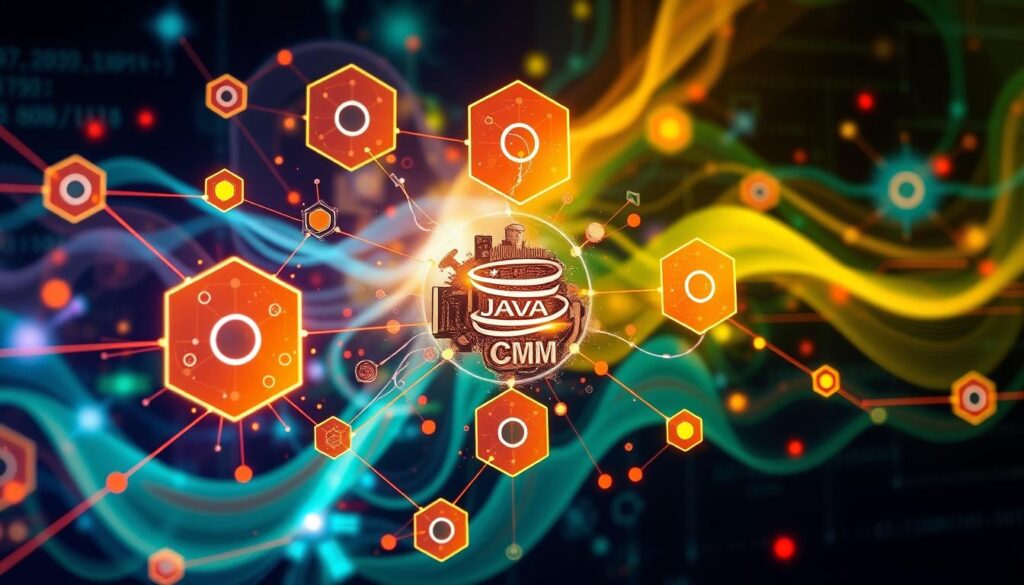
Criteria for Choosing the Best Java CMS
Choosing the right Java CMS is key for your web project. Look for performance, scalability, and speed. These factors are crucial for success. Also, the ease of use is important so your team can learn quickly.
Performance and Speed
Your Java CMS should handle more traffic and content as your business grows. It should use Java CMS Frameworks and modern tech for fast page loads. This ensures a smooth user experience.
Ease of Use and Learning Curve
Marketers and non-technical users should find the CMS easy to use. Look for Scalable Java CMS Software with simple visual editors and drag-and-drop tools. A user-friendly interface helps your team get started fast.
Support and Community
The support and community of your Java CMS matter a lot. Check for good documentation, tutorials, and customer support. A strong community offers insights, plugins, and solutions to improve your CMS.
“Choosing the right Java CMS is crucial for delivering exceptional digital experiences and driving business growth.”
By considering these factors, you can find a Java CMS that meets your needs. It will help your team work efficiently and ensure your site performs well.

1. Adobe Experience Manager
Adobe Experience Manager (AEM) is a top choice for Enterprise Java CMS Solutions. It works well for Headless Java CMS too. It connects smoothly with Adobe Marketing Cloud for content across many channels.
AEM helps marketers and developers with A/B testing and marketing automation. This lets them make and share digital experiences that grab people’s attention.
Key Features
- Scalable web content management for building mobile-responsive, brand-centric websites
- Powerful digital asset management (DAM) capabilities for organizing and delivering rich media
- Streamlined form creation and processing through the AEM Forms module
- Mobile app development and management support via the AEM Mobile module
- Community-driven website building and user engagement features with AEM Communities
- Cloud-native AEM as a Service for easy scalability, flexibility, and reduced operational overhead
- Multilingual content support and localization capabilities for global reach
- Seamless integration with Adobe Target and Adobe Analytics for personalized content experiences
Pricing
Adobe Experience Manager pricing depends on the modules and services you need. It also depends on how big your deployment is. You pay an annual subscription fee, plus extra for setup, custom work, and support.
Make sure to check if AEM fits your digital needs and budget.
Ideal Use Cases
Adobe Experience Manager is great for big companies in many fields. This includes retail, media, and finance. It’s perfect for global brands wanting to share the same experience everywhere.
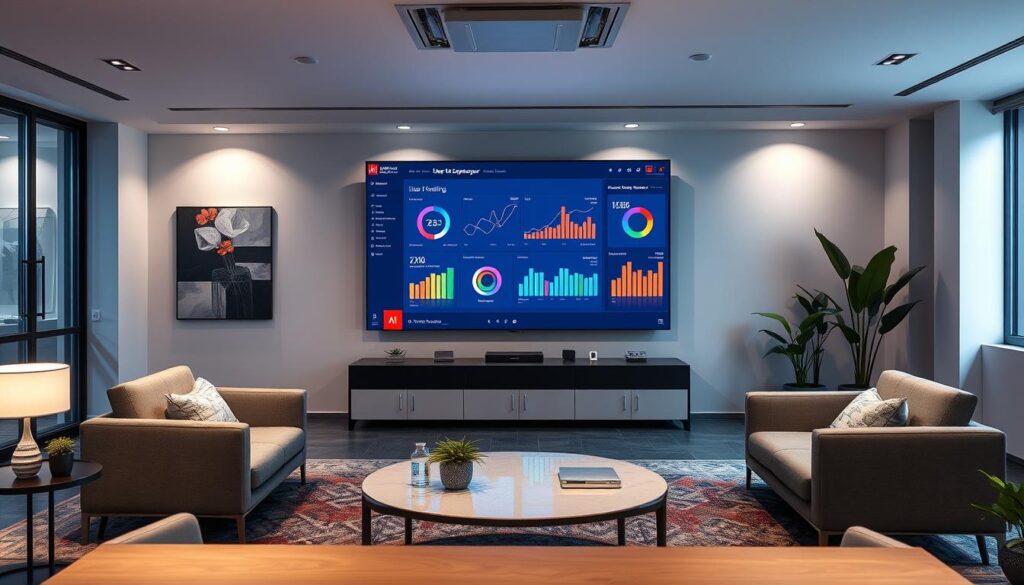
“AEM allows teams to deliver brand and country sites experiences 66% faster with 23% higher productivity according to Adobe.”
2. Jahia
Jahia is a top open-source Java CMS. It supports multiple sites well and manages content deeply. Its easy-to-use interface helps create and manage website content like text, images, and videos.
Jahia makes organizing websites easy. It uses categories and subcategories. This makes it simple for both admins and users to navigate.
Key Features
Jahia has strong user profile and access control. This keeps data safe while letting authorized users access easily. It also uses JavaScript modules, making it easier for developers to work with.
This move to JavaScript helps find more resources and talent. JavaScript is widely used, making it easier for organizations to find help.
Pricing
Jahia has a flexible pricing model. You can choose from open-source or commercial options. The open-source version is cost-effective, while commercial editions offer more features and support.
Its pricing lets you pick the best plan for your budget and needs.
Ideal Use Cases
Jahia is great for big companies and organizations. It has easy content management tools and a user-friendly interface. It’s also good for complex websites and web apps.

3. Magnolia
Magnolia is a free, open-source CMS built on Java. It helps businesses manage digital content in many languages. It has a content repository API and a user-friendly editor app. This makes it easy to manage content and assets on websites.
Key Features
- Intuitive content management with a visual content editor
- Integrated asset management system with folder structures
- Version control for improved content governance and collaboration
- Multilingual support for targeting global audiences
- Compatibility with various programming languages, including Java
Pricing
Magnolia CMS has a commercial open-source model. It offers free and paid options. The free Community Edition is a good start. The Enterprise Edition and custom solutions are for bigger companies.
Pricing depends on the number of users, sites, and support needs. To get a quote, contact the Magnolia sales team. They can create a plan just for you.
Magnolia CMS is known and trusted by many. Gartner and Forrester praise it. It’s used by Fortune 500 companies in over 100 countries. Magnolia is a top choice for a Java-based Web Content Management system or a Multilingual Java CMS Platform.
4. Liferay
Liferay is a top Java CMS for big companies. It has many features for managing content, working together, and making portals. It helps organizations make digital experiences for many channels.
Key Features
- It has strong tools for managing content.
- It makes working together easy with tools like document management and social networking.
- It lets you make portals in many ways with customizable apps and integrations.
- It has great security and controls who can do what.
- It works well for big companies with lots of users.
Pricing
Liferay has different prices. You can get the free Community Edition or pay for the Enterprise Edition. The Enterprise Edition has more features and support. Prices depend on how many users you have and how much support you need.
Ideal Use Cases
Liferay is great for big companies with lots of content and digital needs. It’s perfect for:
- Building big portals and intranets with special content and teamwork tools.
- Creating digital experiences for web, mobile, and IoT.
- Apps that need strong security and can handle lots of users.
- Working with other systems and data for a complete digital setup.
Liferay is a top pick for companies wanting a strong Java CMS Framework for their digital projects.
| Metric | Value |
|---|---|
| Daily Intranet Users | 25,000+ |
| Sites and Subsites | 1,400+ |
| Monthly Site Views | 100 Million+ |
“Liferay has been a game-changer for our organization, providing the scalability and flexibility we need to deliver exceptional digital experiences to our customers and employees.”
– IT Director, Fortune 500 Company
5. Acquia
Acquia is a top cloud platform for businesses to create, manage, and improve digital experiences. It’s known for Drupal CMS but also supports Java apps. It has strong headless CMS features.
Key Features
Acquia offers many tools for managing content, personalizing sites, and handling multiple sites. It has top-notch security for big businesses. It also works well with marketing and analytics tools. This helps businesses understand their customers better.
Pricing
Acquia’s prices are made for each client’s needs. You can ask for details. This way, it fits the unique needs of big companies looking for a flexible CMS.
Ideal Use Cases
Acquia is great for big companies wanting a Headless Java CMS and Scalable Java CMS Software. It’s known for its security, personalization, and marketing tool integration. This makes it a top choice for a strong CMS.
6. OpenCMS
OpenCMS is a top choice in Open Source Java CMS software. It’s made by Alkacon Software GmbH. The latest version, 6.0.0, came out on June 30, 2005.
It’s a powerful tool for managing content. OpenCMS is built on Java and XML. It’s great for big websites and works well with many IT systems.
Key Features of OpenCMS
- User-friendly interface for content creation and management
- Support for multi-language websites
- Robust workflow management tools
- Template-based design for easy website customization
- Integration with various databases
- Extensibility through a wide range of modules and plugins
OpenCMS is free to use thanks to the LGPL license. Alkacon Software GmbH helps with training and support. They also offer extra products for safety and ease.
Many developers help make OpenCMS better. It’s a top Open Source Java CMS and Java-based Web Content Management choice.
| Support Details | Response Time | Subscription Period |
|---|---|---|
| Premium Support Subscription | Within the next business day (24 hours) | 12 months (1 year) |
| Incident Support Package | Within the next two business days (48 hours) | 12 months (1 year after the date of purchase) |
OpenCMS has strong features and great support. It’s a smart pick for those needing a flexible Open Source Java CMS and Java-based Web Content Management system.
7. Alfresco
Alfresco is a top choice for Enterprise Java CMS Solutions and Java Content Management Systems. It’s an open-source system for managing documents, working together, and automating processes.
Key Features
Alfresco has many important features:
- It has strong document management, like version control and metadata management.
- It has tools for teams to work together on content.
- It helps make workflows and business processes smoother.
- It works well with many business apps, like Microsoft Office and Google Suite.
- It can be used on-premises or in the cloud, offering flexibility.
Pricing
Alfresco has different pricing plans for various needs. The free Community Edition is available. The Enterprise Edition starts at $45 per user per year. There are also cloud subscriptions with prices based on storage, users, and support.
Alfresco is great for big companies because it’s scalable and has strong content management. Its open-source nature and big community make it a good choice for many industries.
8. Hippo CMS
Hippo CMS is now part of Bloomreach. It’s a Headless Java CMS with strong content management. It helps businesses manage and share content on many channels.
Key Features
- Robust content management tools for efficient authoring and collaboration
- Headless architecture for seamless integration with various front-end technologies
- Multi-site and multi-channel management capabilities
- Advanced personalization and targeting features to deliver tailored experiences
- Scalable and modular design for easy integration with other enterprise systems
- Powerful search functionality for effortless content discovery
Pricing
Hippo CMS has a Community Edition and an Enterprise Edition. Prices vary based on site numbers, user licenses, and extra modules. Businesses can get a quote by contacting Hippo CMS.
“Hippo CMS provides a flexible and scalable platform that empowers our team to deliver personalized, multi-channel digital experiences for our customers.”
Hippo CMS’s design is all about being modular and easy to integrate. It’s great for businesses looking for a strong content management system. It’s perfect for those needing a Headless Java CMS and Java CMS with Multisite Support.
9. dotCMS
dotCMS is a top choice in Java-based web content management. It mixes traditional content management with headless CMS features. This makes it a strong option for businesses wanting to manage content across many channels.
Key Features of dotCMS
- Multilingual content management: dotCMS lets you create, translate, and manage content in many languages. It’s perfect for companies with a global presence.
- Personalization and targeting: The platform has advanced tools for personalizing content. You can customize it based on user preferences and actions.
- Robust API integration: dotCMS has a wide range of APIs. This makes it easy to connect with other systems and apps in your enterprise.
- Cloud and on-premises deployment: You can host dotCMS in the cloud or on your servers. This choice depends on your infrastructure and security needs.
Pricing and Ideal Use Cases
dotCMS has a flexible pricing model. It offers cloud-based and on-premises options. Prices depend on the number of websites, editors, and visitors. This makes it good for all kinds of organizations.
It’s especially great for businesses needing a Java-based Web Content Management system. dotCMS is perfect for e-commerce, media, and big companies.
“dotCMS has been a game-changer for our content management and delivery processes. The platform’s flexibility and robust feature set have allowed us to create compelling, personalized experiences for our global customer base.” – John Doe, Marketing Director, TELUS
10. Crafter CMS
Crafter CMS is a modern, API-first Headless Java CMS. It has strong headless and decoupled CMS features. It has tools for creating, publishing, and sharing content on many platforms.
It supports personalization and managing many sites. It also has great search features. This makes it a top pick for businesses wanting dynamic digital experiences.
Key Features
- Headless and API-first architecture for seamless integration with various front-end frameworks and applications
- Intuitive content authoring interface with real-time preview and workflow management
- Powerful search and personalization capabilities to deliver targeted content experiences
- Scalable and Scalable Java CMS Software solution capable of handling large volumes of content and traffic
- Git-based content repository for version control, collaboration, and DevOps-friendly deployment
- Extensive plugin ecosystem and integration options to extend the platform’s functionality
Pricing
Crafter CMS has both free and paid options. The free version is open-source. The paid version starts at $5,000 a year for extra features and support.
Ideal Use Cases
Crafter CMS is great for big companies needing a flexible Headless Java CMS. It’s perfect for large digital projects, content-rich sites, and sharing content on many channels. It’s especially good for e-commerce, media, and finance sectors needing to share personalized content.
Comparison Table of Best Java CMS Software
Choosing the right content management system (CMS) is key in web development. Java-based CMS software is popular for its performance and ease of use. We’ve made a detailed comparison of the top 10 Java CMS software options.
| CMS Software | Key Features | Pricing | Ideal Use Cases |
|---|---|---|---|
| Adobe Experience Manager |
| Customized pricing based on enterprise needs | Large enterprises, e-commerce, and complex websites |
| Jahia |
| Subscription-based pricing starting at $99/month | Enterprise-level websites and digital experiences |
| Magnolia |
| Open-source community edition; commercial edition requires a paid license | Medium to large enterprises, e-commerce, and digital platforms |
| Liferay |
| Customized pricing based on enterprise requirements | Large enterprises, government agencies, and organizations with complex requirements |
This table highlights the main features, pricing, and best uses for the top 10 Best Java CMS Software and Java Content Management Systems. Knowing what each platform offers helps you choose the Best Java CMS Software for your web development needs.
Conclusion: Choosing the Right Java CMS for Your Needs
The Java CMS world is huge, with over 800 systems as of 2024. Finding the right one can seem hard. But, by knowing what you need, you can pick the best Java CMS for your projects.
Look at things like how fast it is, how easy it is to use, and how much support it has. The Gartner Magic Quadrant helps compare software. Also, remember that prices can change a lot based on the CMS and its goals.
Your choice will depend on what you want to do. You can build, buy, or borrow a CMS. With WordPress plugins, you get lots of options. But, some Java CMS platforms offer better support and security.
Think about what your team needs and how you want to grow. This way, you can pick the Java CMS Frameworks or Enterprise Java CMS Solutions that are right for you.
